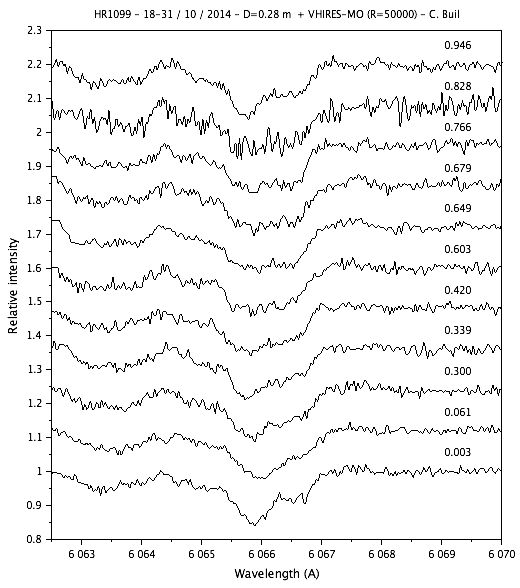Here the geometrical explanation of line distortion in presence of spotstar (Vogt and Penrod, PASP, 95, 565, 1983):
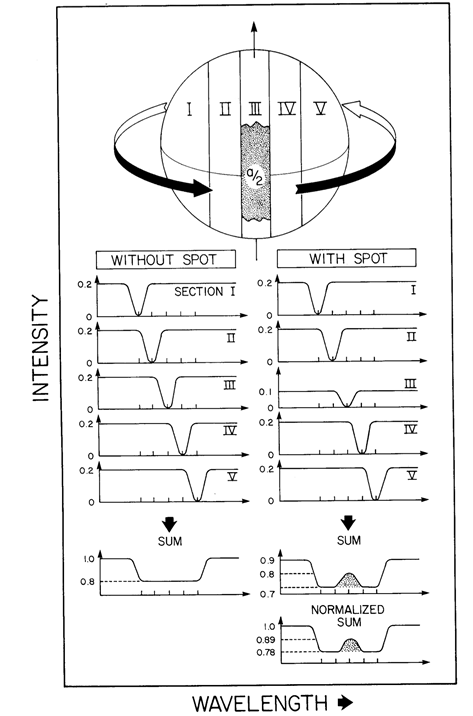
An example of disk reconstruction on RS CVn star HR 1099 by line shape analysis:
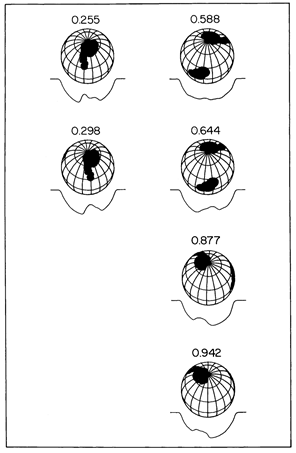
(Lick 3-m Shane telescope (1981))
Now, in year 2014, the same star observed at R = 50000 with a VHIRES-MO spectrograph and a C11 telescope. The initial sequence data:
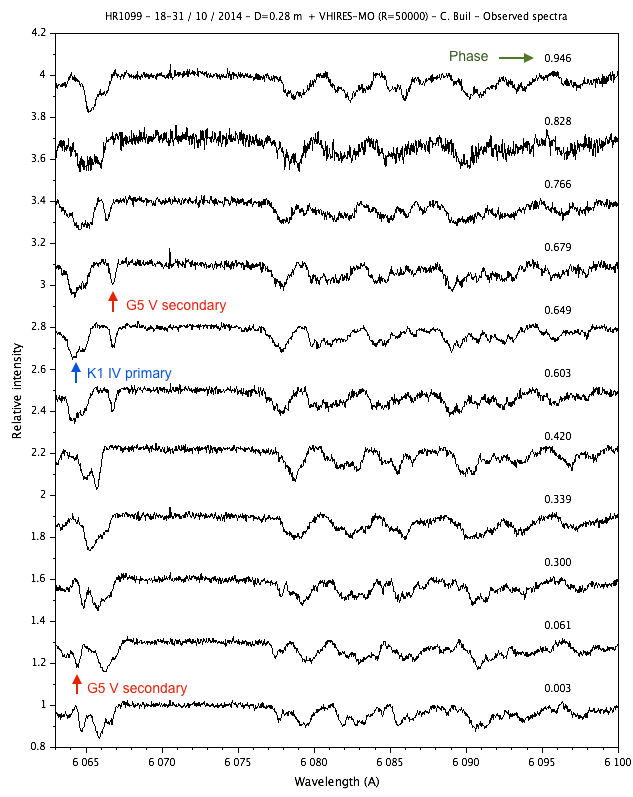
A complex spectrum (double lined spectroscopic binary with a 2.8 days period).
After some processing, the starspot on the K1 primary of the system is now detect:
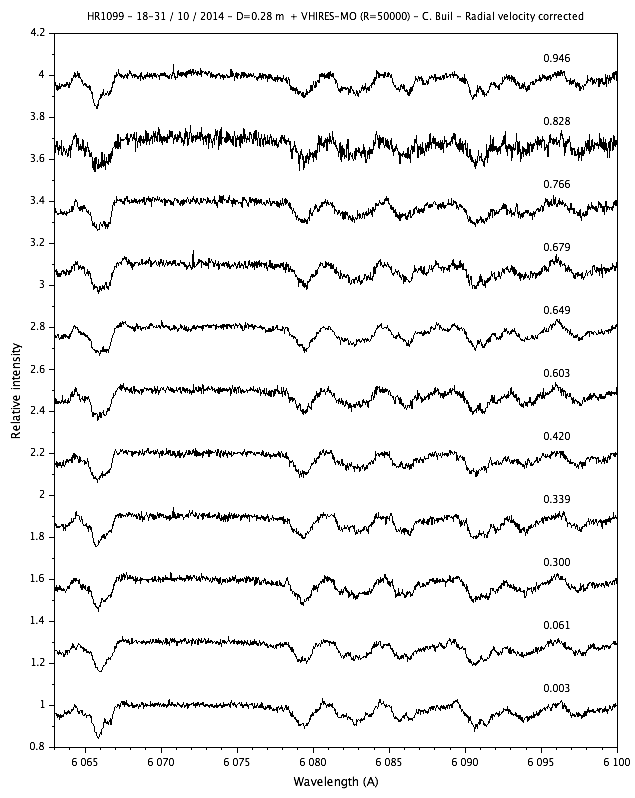
... see periodic bumps in the Fe I near 6065 A and compare with Vogt and Penrod original work
(the final disk image can be constructed by modeling the observed spectral lines shape, coming soon, but some mathematic
is necessary for an automatic inversion processing task, help is welcome).
Details of the observation and methods are given here:
http://www.astrosurf.com/buil/doppler_i ... d1099.html
Resolve detail on the surface of a star with a spectrograph is an old dream for me. One of the most fascinating applications of spectroscopy!
Christian
